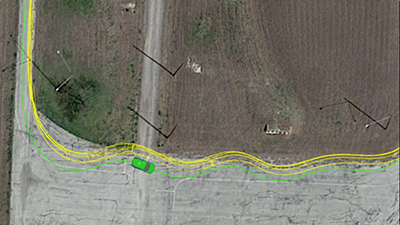SwRI's RANGER localization technology allows precise automated driving

Southwest Research Institute (SwRI) has developed RANGER, a patented approach to vehicle localization that enables precise navigation for automated vehicles. R&D Magazine recently recognized RANGER as one of the 100 most significant innovations for 2015.
RANGER is a relatively low-cost solution, which uses a ground-facing camera and localization algorithms to provide precise position and orientation measurements. RANGER images the unique "fingerprint" of road surfaces, allowing precise automated driving within 2 centimeters, similar to the most accurate (and most expensive) GPS systems. RANGER, however, can operate in areas or environments where GPS has poor performance or fails completely.
"Localization for automated vehicles is a significant challenge," said Dr. Kristopher Kozak, a principal engineer in SwRI's Automation and Data Systems Division who led RANGER's development. "GPS is very good; it's ubiquitous, everybody has GPS on their phones, but it's not always as accurate as you need it to be for automated vehicle localization. RANGER is a low-cost, high-precision localization system that overcomes a lot of problems affecting GPS systems."
RANGER works by matching thousands of distinguishing features on the ground to corresponding features collected and stored in a map. These features include obvious large-scale characteristics like cracks, road markings, oil stains, etc., as well as small, subtle features such as exposed aggregate and contrast variations. The composition of features on every patch of ground is unique, like a "fingerprint," and RANGER needs only a small percentage of the features to match to accurately determine the location of the vehicle.
RANGER is a novel approach to localization for automated driving that performs well in all illumination conditions and typical adverse weather conditions, including rain and fog. While other sensor-based localization approaches are more common, none use a similar camera-based approach with controlled illumination, and none can match RANGER's precision.
Provided by Southwest Research Institute




















